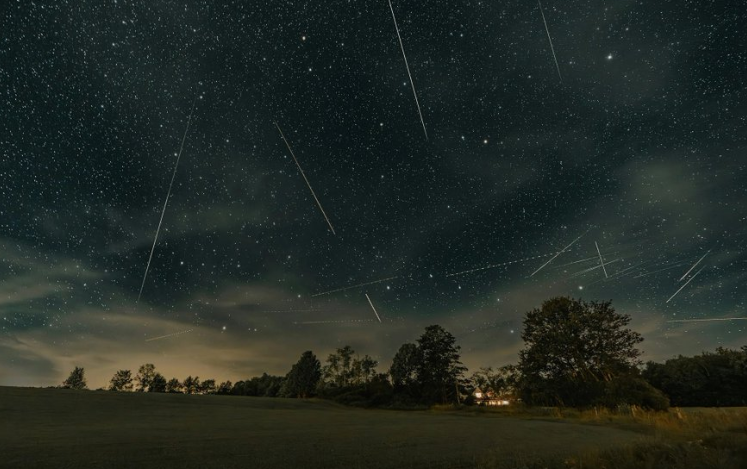
For centuries, people have made wishes to “shooting stars,” told stories about them, or just paused and watched them in quiet awe. But what we actually see is a tiny bit of space dust, which is often no bigger than a pebble, burning up as it hits Earth’s atmosphere at high speed. In that small moment, it creates a glowing trail of light that feels magical.These flashes are called meteors, and when Earth passes through a cloud of space debris left behind by a comet or asteroid, the planet experiences a meteor shower. Most of these showers happen around the same time every year and are named after the constellation they appear to

The Chi Cygnids meteor shower @Shane4Congress1/X
come from.The Chi Cygnids meteor shower is one such cosmic surprise, and this time the skywatchers are in for a treat.
What is the Chi Cygnids meteor shower?
The Chi Cygnids are a meteor shower that’s fairly weak during most years, but every five years, the meteor shower can be seen from this constellation. According to SETI Institute researchers, Peter Jenniskens and colleagues detected the shower in late August 2025, with signs that its activity might increase as mid‑September approaches. SETI says that previous noticeable Chi Cygnid displays happened in 2010, 2015, and 2020, which supports the idea of a five‑year cycle. The shower’s meteoroids are believed to be trapped in a 7:3 orbital resonance with Jupiter, causing this periodic boost in numbers.
When and where to watch in 2025
SETI suggests the Chi Cygnids will peak around 14 September 2025, with some increased activity possibly visible on 13 and 15 September, according to the SETI Institute. Different organisations like EarthSky report that while these are the best dates, enthusiasts should monitor all nights around then, especially after dark and into early morning. The radiant point, the spot in the sky where the meteors seem to originate, is close to the star Chi Cygni in the constellation Cygnus. That makes the shower easier to spot for observers in the Northern Hemisphere during mid‑September evenings.
What makes this shower special
What sets the Chi Cygnids apart is their slow speed. They’re not blazing fast like the Perseids; their entry speed into Earth’s atmosphere is about 15 km/sec. That slower pace means each meteor lasts a little longer in view, giving observers more time to notice them. Also, because the moon is in its last quarter phase around 14 September, there will be a window of darker skies late in the evening before the moon rises high enough to interfere.
What tips should you follow for the best view
To make the most of the show, find a dark spot away from city lights and allow your eyes some time, around 20‑30 minutes, to adjust to the darkness. Lie back, look toward Cygnus after sunset, and stay patient. The meteors may not be many per hour, unlike the big annual showers, but seeing a few slow, bright trails can be a unique experience.





